Identification of bacterial lipopeptides as key players in IBS
- PMID: 36241390
- PMCID: PMC10086498
- DOI: 10.1136/gutjnl-2022-328084
Identification of bacterial lipopeptides as key players in IBS
Abstract
Objectives: Clinical studies revealed that early-life adverse events contribute to the development of IBS in adulthood. The aim of our study was to investigate the relationship between prenatal stress (PS), gut microbiota and visceral hypersensitivity with a focus on bacterial lipopeptides containing γ-aminobutyric acid (GABA).
Design: We developed a model of PS in mice and evaluated, in adult offspring, visceral hypersensitivity to colorectal distension (CRD), colon inflammation, barrier function and gut microbiota taxonomy. We quantified the production of lipopeptides containing GABA by mass spectrometry in a specific strain of bacteria decreased in PS, in PS mouse colons, and in faeces of patients with IBS and healthy volunteers (HVs). Finally, we assessed their effect on PS-induced visceral hypersensitivity.
Results: Prenatally stressed mice of both sexes presented visceral hypersensitivity, no overt colon inflammation or barrier dysfunction but a gut microbiota dysbiosis. The dysbiosis was distinguished by a decreased abundance of Ligilactobacillus murinus, in both sexes, inversely correlated with visceral hypersensitivity to CRD in mice. An isolate from this bacterial species produced several lipopeptides containing GABA including C14AsnGABA. Interestingly, intracolonic treatment with C14AsnGABA decreased the visceral sensitivity of PS mice to CRD. The concentration of C16LeuGABA, a lipopeptide which inhibited sensory neurons activation, was decreased in faeces of patients with IBS compared with HVs.
Conclusion: PS impacts the gut microbiota composition and metabolic function in adulthood. The reduced capacity of the gut microbiota to produce GABA lipopeptides could be one of the mechanisms linking PS and visceral hypersensitivity in adulthood.
Keywords: ENTERIC BACTERIAL MICROFLORA; IRRITABLE BOWEL SYNDROME; LACTIC ACID BACTERIA; LIPIDS; VISCERAL HYPERSENSITIVITY.
© Author(s) (or their employer(s)) 2023. Re-use permitted under CC BY-NC. No commercial re-use. See rights and permissions. Published by BMJ.
Conflict of interest statement
Competing interests: PP is a senior fellow of the Institut Universitaire de France. CM has been awarded the UEG Research Award 2020 for her stay at The University of Gothenburg and by the FARE Fellowship of the French Gastroenterology Society in 2015.
Figures
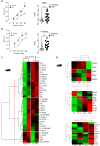
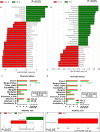

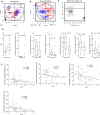

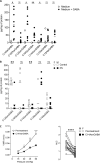
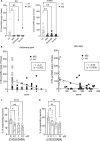
References
Publication types
MeSH terms
LinkOut - more resources
Full Text Sources
